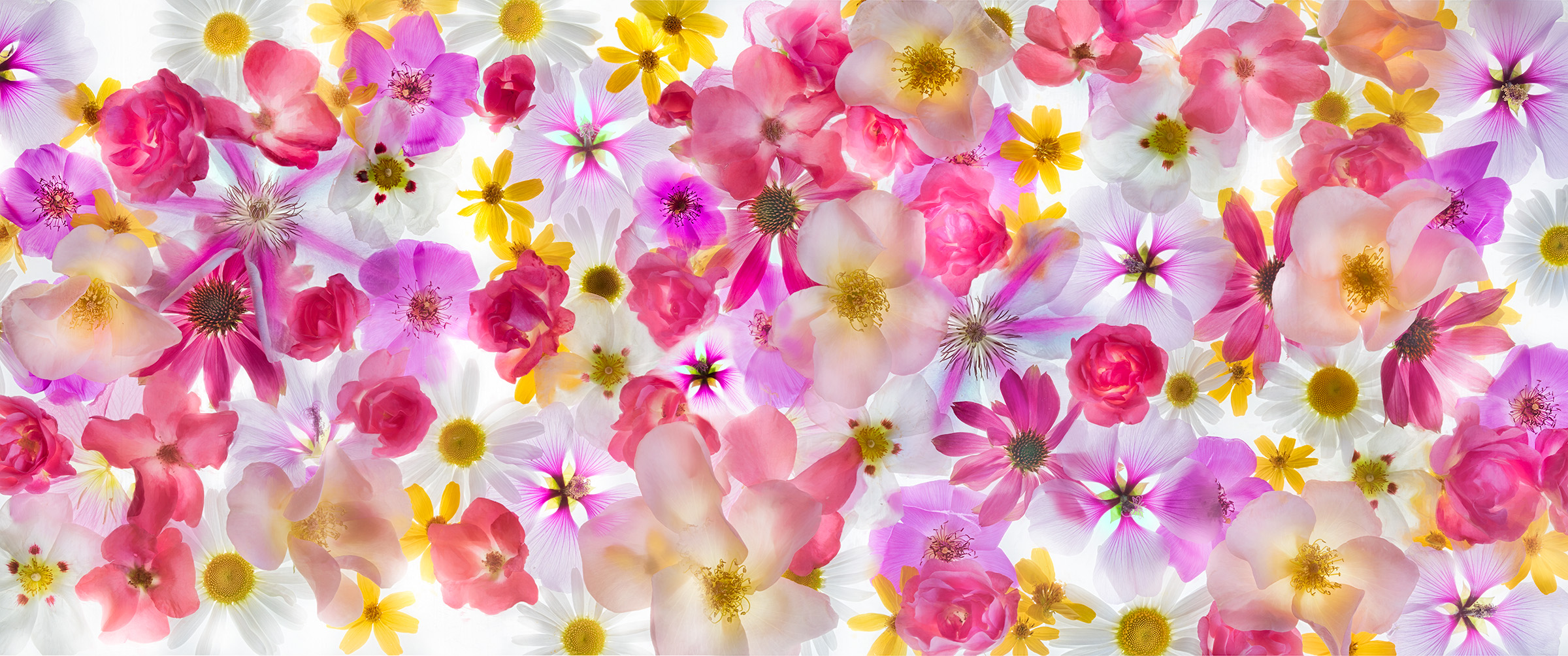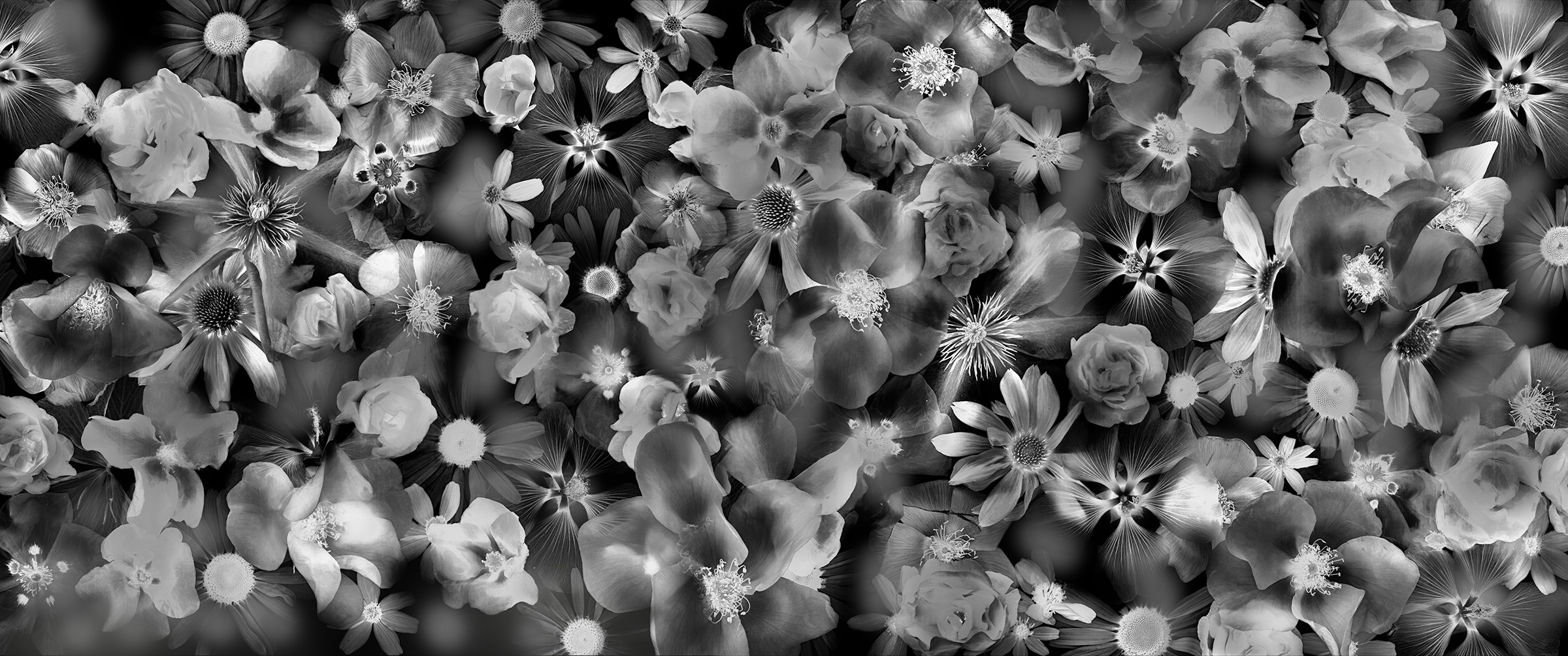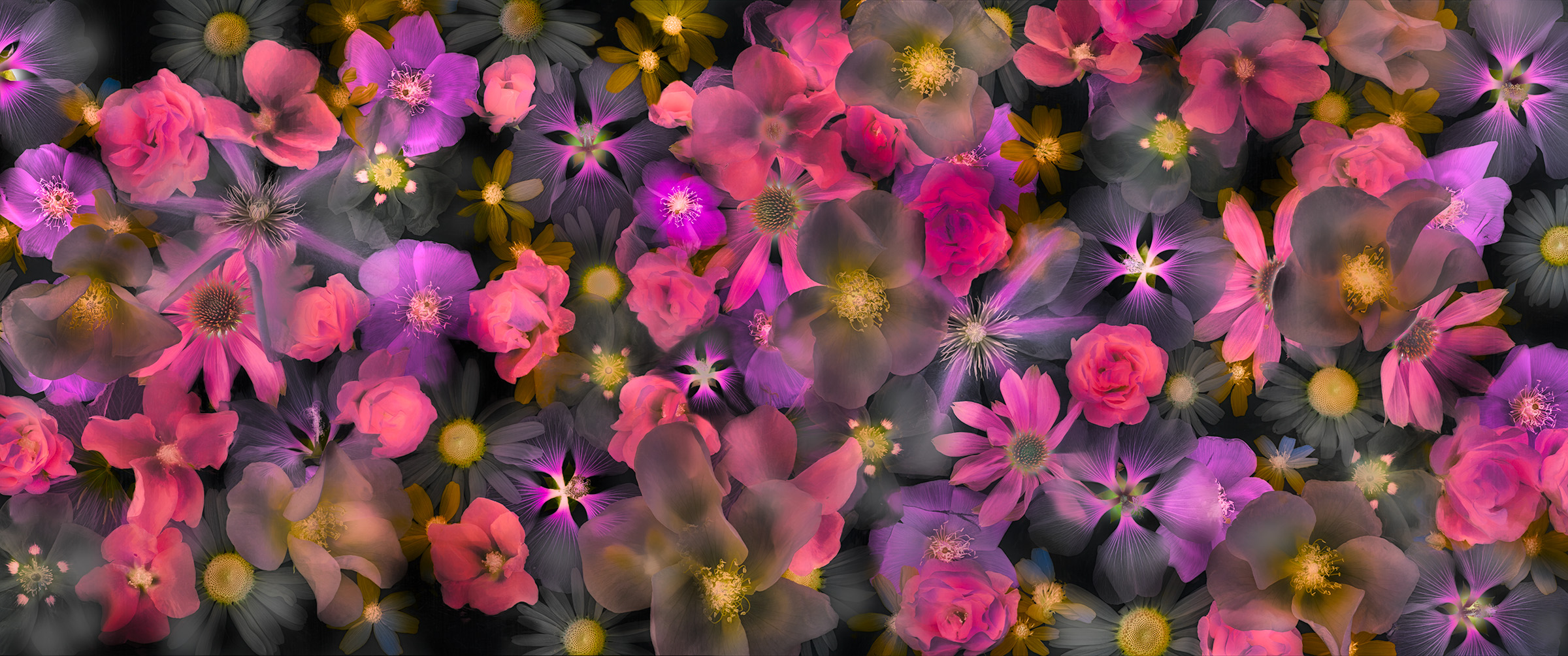These floral fantasies are created and photographed as collages on the light box, then processing in Adobe Camera Raw, Photoshop, Nik, Topaz, and using LAB color adjustments. What fun!

Photographed with my Zeiss Otus 85mm at f/16 and ISO 64 in two panels, each panel with eight exposures ranging from 1/15 of a second to 15 seconds. First I combine the captures in each panel using the techniques explained in my Photographing Flowers for Transparency FAQ. Then I use Photoshop to combine the left and right sides of this floral panorama, for an extremely high resolution file.

The workflow for processing these images is laborious but a great deal of fun. Learn more via my books, my online webinar recordings, or in a Harold Davis workshop (there are only a few spaces left in my Flower workshop in Maine this August).

Michael Hunter
10 May 2020Hum… I thought “Shadow-of-the-Solarized-Moon” was a photogram (a photographic print where the subject, flowers, take the place of a negative). I work a lot with Photoshop but there are disadvantages too. There is a risk that you might introduce something that is not related to the subject and do so without intending to make a statement about the subject.
Like making a flower blue because blue is your favorite color doesn’t have anything to do with your subject. It’s a different matter if you make the flower blue because the flower, often used as a porcelain pattern, and making it porcelain blue makes a connection between the flower and a culture and a time. In the second case, the aesthetic decision is related to the subject.
Yes, I know photographers never stop making decisions – with or without Photoshop. It’s just that Photoshop makes it too easy to make irrelevant add-ons that distract from the objective of the photo. The worst mistake: using anything out of the “Filter Gallery”. I hear in my mind the advertising executive saying about that: “With a simple click of a button you can turn any photograph into a work of art.” I’m not saying that’s you, I’m just making a point by bringing up the most horrific case.
What I like about photograms is that they often uncover something about the subject that is both true and not normally visible. An X-ray is a type of photogram. If I’m in a situation where I can look at an X-ray without fear of the results, I’m delighted to see ribs and delicate tissues and notice the complexity that normally goes unseen and unnoticed.
Anyway, I enjoyed your photos, thanks for sharing them!